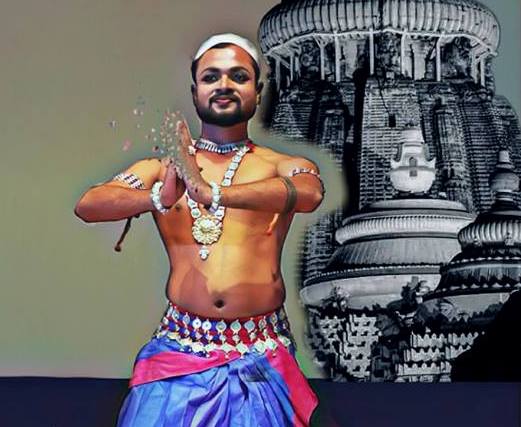Bhubaneswar: The devotion of Odia religious poet Salabega for Lord Jagannath came alive on stage with Odissi dancer Sanket Mishra performing on one of his songs Ahe Neelashaila (Oh Bluestone Lord) in Kolkata recently.
What set the performance apart was the skullcap he wore to depict the great poet of Bhakti cult and the intensity and passion of his devotion. “Amid rising communal disharmony in our country, I found the story of ‘Bhakta Salabega’ extremely relevant. First, he belonged to the Beg family, one of the purest of pure Muslims. Second, he was a part of the Mughal army that executed the temple-breaking propaganda. This Muslim subedar, suddenly deviates from his work, philosophy, beliefs and writes passionate poetry for a mainstream Hindu God! This revolution is appealing. No other poets have described the Lord with this amount of passion. His revolutionary step, blurred all differences between religions and that too through music!” said this young dancer.

Sanket did away with paita (sacred thread) and tilak and wore a skullcap instead for the recital. “The changes in costume were done keeping the rules of Nāṭya Śāstra intact. The skullcap on my head symbolises Islam. Muslims cover their heads as a sunnat before prayer. Odissi is a form of prayer for me, thus I too covered my head as a dedication to Salabega. This is a small effort to bring out the philosophy of communal harmony,” he explained.
Saket presented the item on Swachh Bharat Pakhwada being conducted in all educational institutions. “The idea was to convey the message loud and clear that for a clean country one needs to have a clean heart and conscience. We have to eradicate the filth of communality from our mind,” he said.

This 24-year-old Odissi exponent, however, admitted to that there were apprehensions about him using the skullcap. “My gurus were initially startled hearing the concept. However, they guided me in my endeavour. With their blessings and in the light of Nāṭya Śāstra, colloquial legends, devotional narratives in Dadhyata Bhakti and a thorough research of the previous works that this performance was produced and performed,” he said.
While he ended the performance to a deafening applause from the audience, what made it even more special was a hug from a maintenance staff, a Muslim, of the college. “I was happy that the dance recital could convey the message right. On social media too, I got a lot of positive comments,” he added.

Sanket was introduced to Odissi by his mother and sister. “One of my earliest memories is that of my sister performing this same piece on stage. I was around five then. It ignited the passion for Odissi in me. However, it was only after I met my Guru Rupalata Mohanty from Annapurna Theatre in Puri, Odissi became something more than art for me, it became my way of expression,” he said.
A student of filmmaking in Satyajit Ray Films and Television Institute, he feels philosophy and research is extremely important while studying any artform. “I am blessed to have the guidance of Rahul Acharya. I consider him my philosopher and guide in the field of Odissi and its theoretical knowledge,” he said.

Sanket’s next project is on the works of Odia bhakta-poet Banamali Das. “Mali Mala Shyama Ku Debi, this very feminine poem was written by a man. Das is a remarkable example of Indian feminism,” he expressed.
He will be performing on one of his songs, ‘Kede Chanda‘, on February 1 at Annapurna Theatre in Puri. “I would be presenting the forced motherhood of Putana on Krishna and equate it with the attempts to impose one language as the national language in a diverse country like ours,” he concluded.


Comments are closed.